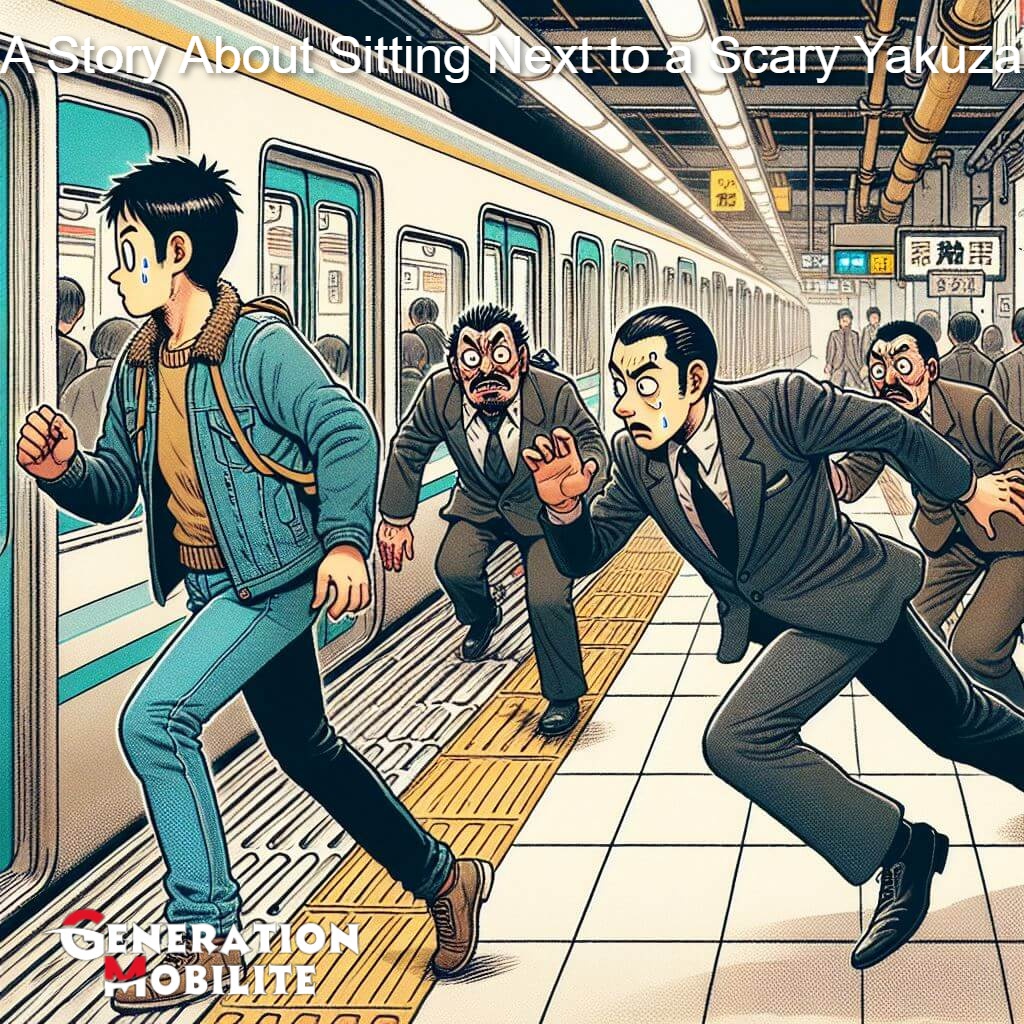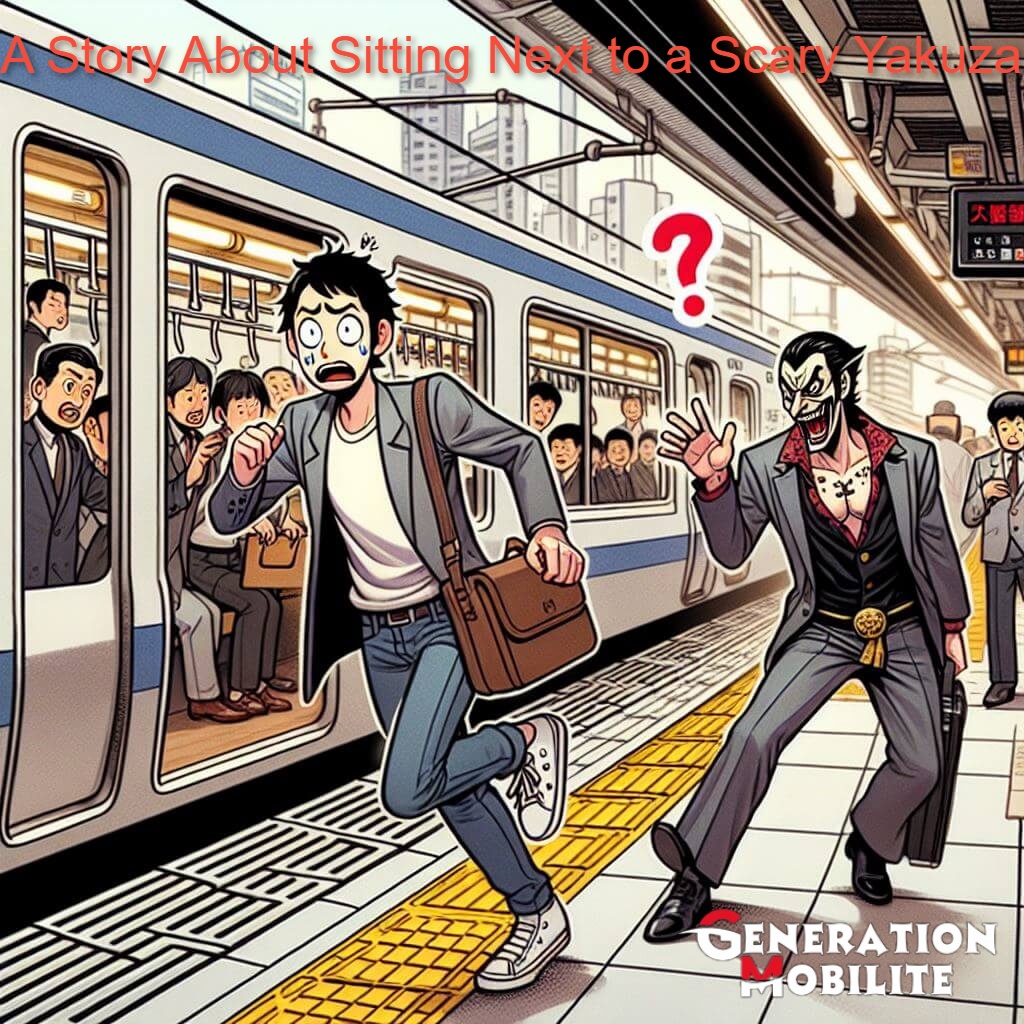Introduction
The yakuza are Japan’s organised crime syndicates, similar to mafia families in the United States. With over 100,000 members across the country, the yakuza engage in criminal activities like drug trafficking, gambling, prostitution, and extortion. They are known for their strict organisational structure, elaborate tattoos, and occasional public violence.
Table of Contents
While the yakuza keep a low profile in daily life, ordinary Japanese citizens know to avoid them. So you can imagine my shock when I found myself sitting next to a yakuza member on the train. In this essay, I’ll recount my terrifying experience and reflect on what it reveals about the mysterious world of the yakuza.
The Encounter
It started out as an ordinary Tuesday morning in Tokyo. I was commuting to work, squeezed into a packed subway car during rush hour. Staring blankly at my phone, I didn’t pay much attention to the older man who sat down next to me. He was wearing a nondescript grey suit and reading the newspaper.
After a few minutes, I glanced over at the newspaper headlines. That’s when the man’s hand caught my eye – he was missing the tip of his little finger. In yakuza culture, members cut off the tips of their fingers as a form of penance or punishment under their strict code. The missing finger is a clear sign that someone is a yakuza.

A chill went down my spine as I sat next to this dangerous criminal. I subtly studied his features – he was probably in his 50s or 60s, with slicked back hair and a stern expression. He didn’t seem to notice my attention, engrossed in reading the newspaper.
I considered changing seats, but the subway car was too crowded to move. Trapped next to him, my mind raced with fear. Would he threaten me if I made accidental eye contact? Would he somehow know I recognized him as a yakuza? I kept my head down, praying the train would reach my stop quickly.
My Fear
As I sat rigidly next to the yakuza member, I was surprised by the intensity of my fear. Of course, the yakuza’s reputation for violence explained my anxiety. But I also felt a deeper unease about sitting beside someone who lived by such a ruthless code of honour and crime.
The missing finger perfectly encapsulated the bloody rules of his secretive world. What acts had he committed to lose part of himself as punishment? Had he callously cut off the finger himself to protect his group? The sacrifice symbolised how yakuza devote their lives absolutely to their organisations.
I was also unsettled by the ordinary public facade he presented. Outwardly, he looked like any other middle-aged Japanese businessman reading the paper. But beneath the normal exterior lurked the reality of his criminal life. It reminded me how the yakuza quietly permeate Japanese society, with tentacles reaching into corporations, politics, and beyond.
This encounter abruptly forced me to confront the dark side of Japan I knew existed but rarely saw firsthand. Sitting next to the physical embodiment of the notorious yakuza made me feel naive about the country I called home.
Reflecting on the Yakuza
After the initial fear subsided, I reflected more on the uneasy coexistence between the yakuza and Japanese society.
Ordinary citizens try to avoid interacting with them, while turning a blind eye to how entrenched they are in certain industries. Their initiation rituals and rules seem archaic and extreme, yet they persist in following this code. The competing attitudes of avoidance and grudging tolerance toward the yakuza struck me.
I also pondered the mentality of a yakuza member. What draws certain men to join these syndicates and adopt their way of life? Some may be lured by promises of wealth and power. Others may seek the security and brotherhood of belonging to an organisation. The rigid hierarchy and rules likely provide order missing elsewhere in their lives.
In the end, though, their creed harms society more than it does good. Most disturbingly, the yakuza target vulnerable populations like desperate foreign workers and debt-ridden civilians. Ultimately, the modernization and prosperity of Japan will depend on curtailing the unchecked influence of yakuza groups.

Conclusion
Sitting next to the yakuza member turned out to be one of the most memorable experiences of my life in Japan. The encounter encapsulated the tense relationship between the secretive syndicates and the wider public. My own mix of emotions showed the psychological impact of these groups through fear and unease.
Read more:The Secret Affairs Of the 3rd Generation Chaebol
While the ride was terrifying at the moment, it gave me insight into an usually invisible part of Japanese society. It reminded me that behind Japan’s shiny modern exterior, complex social problems still exist. The mix of ordinary public life and criminal underworlds is a reality in Japan, even if most people pretend not to see it. Overall, the chance encounter taught me to be less naïve about the country I live in. I won’t forget that morning I spent riding beside a member of the mysterious and frightening yakuza.


